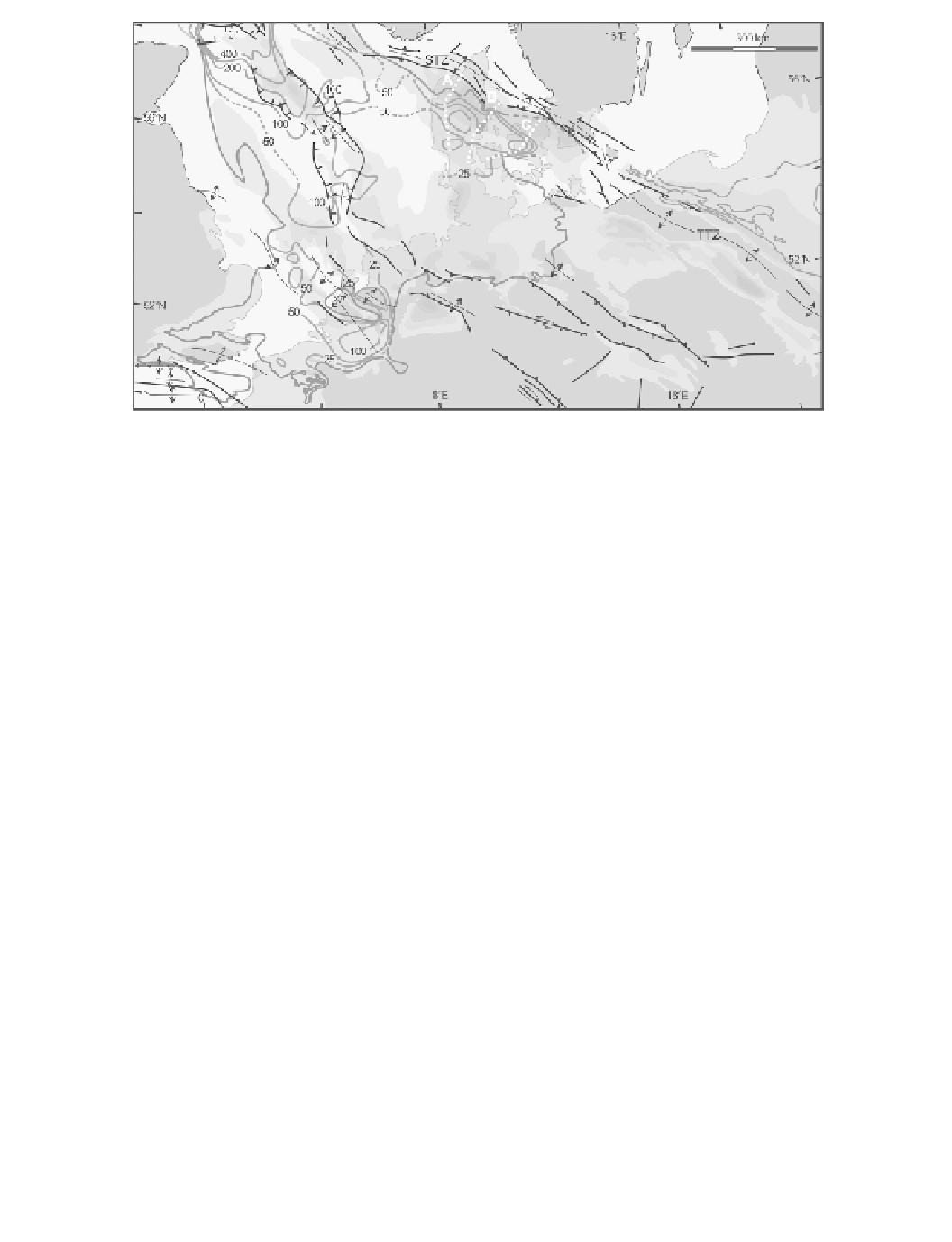Geoscience Reference
In-Depth Information
Figure 10.3 Inversion structures on the European continent (axes with anticline symbols) and the
thickness of Late Cretaceous-Danian depocentres (yellow to brown colours increasing from 0-500 m,
500-1000 m, 1000-1500 m and
>
1500 m, respectively) and Middle-Late Paleocene depocentres
(blue contours - labels in metres - with the red line indicating the depositional limit). The asym-
metrical depocentres of the former are related to the primary, compressional, inversion and the more
symmetrical and shallower Paleocene depocentres are related to secondary, relaxation, inversion.
The depocentre east of the TTZ in Poland bounded by the green line represents Paleocene deposits
<
50 m. STZ is the Sorgenfrei-Tornquist Zone; TTZ is the Tornquist-Teisseyre Zone. The dotted
white lines are the approximate locations of geological cross-sections (A, B and C) shown in
Figure
inversion are eroded ridges of up to some hundred kilometres length and of (order of
magnitude) 50 kmwidth. Flanking such zones are wider sedimentary depocentres (marginal
troughs), which show a characteristic deepening towards the border faults of the uplifted
zone as seen in the Upper Cretaceous-Paleocene thickness map of Europe (
Figure 10.3
)
.
The internal structure of the uplifted area is characterised by reversely activated faults and
thrusts, and erosion depths of up to some kilometres. It is characteristic that it is the same
structures that have been reactivated over and over again.
The inversion movements occurred in phases. The earliest phase dates back to the
of the transtensional stress regime responsible for the breakup of Pangaea to an over-all
transpressional stress regime produced by the African-European convergence and, indeed,
the onset of continent-continent collision in the Alpine Orogeny (Eo-Alpine orogenic

